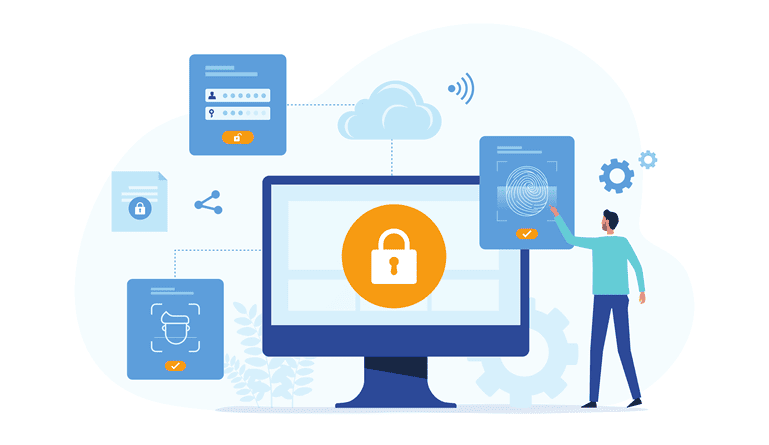As the IT landscape becomes increasingly servitized, network as a service (NaaS) is at the forefront of modern IT discourse and dialogue. Despite declining IT expenditures in 2023, IT executives continue to invest in network services. This year, 88% of IT leaders will invest in network services, and companies such as Wipro, Cisco, and Aryaka are seeking to provide next-generation NaaS services.
What is Network as a Service (NaaS)?
NaaS can be described as network infrastructure software, services, hardware, management, and licensing consumed via a subscription-led or customizable utilization model. It is a cloud-based system that enables users to effortlessly operate the network and attain the desired results without possessing, constructing, or managing their own infrastructure.
Using NaaS, hardware-focused VPNs, load-balancing devices, firewall equipment, and Multi-Protocol Label Switching (MPLS) interfaces can be replaced. Users can scale up or down in response to fluctuating demand, swiftly deploy services, and eradicate hardware costs.
Flexibility in the balance sheet is a significant advantage of NaaS for executive management. It predominantly impacts operational expense (OPEX) accounting with a subscription-led model.
NaaS is frequently endorsed as an OPEX strategy by the CIO by linking NaaS with budget outlooks for IT. The advantage of NaaS is that it’s a usage-based service agreement. For instance, a straightforward NaaS SKU associated with a service-based delivery model could be easier to accept and action from an OPEX perspective.
How Does Network as a Service (NaaS) Work?
Historically, businesses have acquired enterprise network infrastructure through a one-time capital investment of hardware, software, licenses, as well as services, and this may or may not be bundled together.
NaaS enables enterprises to use and potentially delegate all aspects of the enterprise network implementation, with all software, hardware, licensing, and services delivered via an individualized consumption or subscription model.
NaaS also enables organizations to outsource the network’s strategy, execution, and day-to-day operations, including software upgrades, monitoring, and troubleshooting, in addition to shutdown and end-of-life assistance. Through this method, organizations gain access to cutting-edge technology while reducing the workload of their IT employees.
Why are Companies Choosing NaaS?
Actual networks with routers, switches, and licenses demand capital expenditures (CapEx) in line with the conventional network model. This DIY IT approach calls for preparation and execution time along with an advanced level of technical expertise.
- Due to the rapid evolution of technology and threats to security, continual updating and patch management are essential.
- As part of the manual process of provisioning a new service, an engineer must install equipment at multiple locations.
- Service delivery and problem-solving have historically been arduous processes.
As network complexity evolved, IT teams have been unable to keep up. NaaS is a superior alternative to internally managed networks. There are numerous use cases that are compatible with NaaS, like an all-encompassing branch office or store-as-a-service that includes a network, WAN circuitry, and wireless for a single monthly fee. These could also include additional services, like safety and cooperation, for added convenience.
Benefits of Network as a Service (NaaS)
Using a NaaS solutions offers the following benefits:
1. Scale your network, your digital infrastructure, and consequently, the business
Traditional hardware-based services are inherently less scalable than cloud services like NaaS. Enterprise NaaS clients can purchase extra storage from a vendor as opposed to making purchases, installing, and launching additional infrastructure.
2. Save costs, especially for maintenance
This benefit is contingent on the vendor. However, purchasing cloud services rather than developing one’s own services can often result in cost reductions: cloud users are not obligated to purchase or look after hardware, and the service provider already has the infrastructure necessary to provide the service. In addition, the cloud service provider manages software and hardware modifications and administers the network.
3. Support “work from anywhere” models
Depending on the configuration of a cloud-based network, consumers can access it from any place — and on any machine — without a VPN. However, this may necessitate stringent access control. Ideal user requirements consist of a connection to the internet and valid login credentials. This renders network as a service (NaaS) perfect for remote employment as well as hybrid environments.
4. Keep your networks secure without additional efforts
Enhanced security is yet another significant benefit of NaaS. To minimize the likelihood of data breaches, vendors frequently incorporate safety features like secure asset deactivation into their NaaS offerings. Due to the very nature of NaaS technology, a single provider can offer security and networking services, allowing for tighter integration between the network’s infrastructure and its security.
5. Get closer to your ESG goals
Environmental, social, and governance (ESG) reporting increased in relevance for businesses. Fortunately, the most outstanding NaaS services employ ideas of sustainable reuse and retirement. This enables NaaS consumers to fulfill their sustainability goals because they are not responsible for handling end-of-life hardware.
6. Improve network uptime through proactive management
The anticipatory guidance and management capabilities of NaaS reduce the risk of disruption. AIOps (artificial intelligence for IT operations) or highly experienced networking professionals are frequently a part of preemptive management functions or disciplines in order to maximize NaaS deployment with optimum configuration. This proactive management strategy is intended to maximize network operations by discovering and fixing problems before they trigger a service interruption.
Examples of Network as a Service or NaaS
Cisco Plus is a great instance of how NaaS operates. First, Cisco’s Plus Hybrid Cloud encompasses the company’s computation, networking, as well as storage portfolio for data centers, as well as software and storage via third parties. All of this is taken care of by the organization’s cloud-management software. Employing an API, clients can select the desired level of design, planning, and execution services.
The second Cisco Plus service will unite the organization’s secure access services edge (SASE) components, including SD-WAN as well as cloud-based Umbrella security applications.
In addition to owning network infrastructure, service providers such as Megaport and PacketFabric concentrate on providing a controlled spectrum of highly adaptable and affordable NaaS offerings, occasionally called software-defined interconnect services. Their primary benefit is facilitating access to the public cloud as well as other service providers at key colocation or internet exchange locations.
Even without possessing the fundamental infrastructure, service providers are able to build SD-WAN and additional NaaS offerings.
Is there a Downside to NaaS?
While the benefits of the network as a service or NaaS are overwhelming, it may not be the right solution for every scenario. Before investing, keep in mind that:
- You may face compatibility issues: The NaaS provider’s infrastructure might not be interoperable with current legacy systems, like antiquated hardware and on-premises applications.
- Vendor lock-in is a risk: Switching to a cloud service frequently brings the possibility that an organization will become overly reliant on a single service provider. This is also because NaaS solutions at the moment lack interoperability.
- Implementation is a challenge for companies using data centers: In numerous organizations, critical applications and processes are still hosted on-premises, not in the cloud. This makes transitioning to a NaaS architecture a bit difficult.
- Local internet services may prove to be a challenge: Since NaaS connectivity usually starts by using “best effort” public broadband, the service is only accessible in locations wherein broadband Internet connectivity is accessible. This can restrict efficiency and capacities as per the connectivity speed.
- The loss of control may not be acceptable for regulated industries: Loss of control is another concern for organizations such as healthcare and financial services. Adopters may be concerned about service availability and information as well as network resource management.
Final Thought
NaaS offers the versatility to invoice for services according to consumption and to scale up or down as business requirements develop. In addition, it offers the capacity to track and regulate networking services, as well as trace usage and invoicing. On-demand services may be requested, established, and co-managed.
Given that NaaS is readily accessible from any location and on any device, it is anticipated that it will become essential in remote/hybrid employment scenarios in the years to come. Using NaaS, a business may virtualize its computer network and govern it with virtualized logic entities, as opposed to using hardware controllers and hubs to supervise network activity.
However, IT administrators must prioritize network security when selecting a network as a service (NaaS) provider, among which are Cisco, Perimeter 81, Aryaka, Megaport, etc., among several others.







